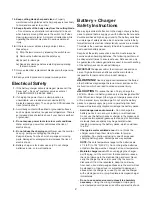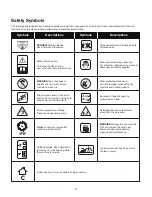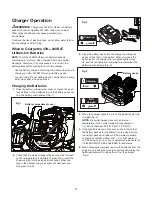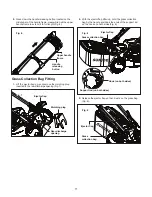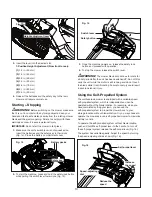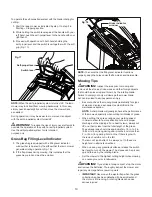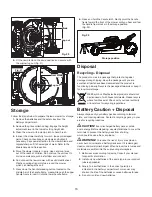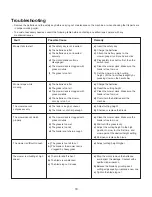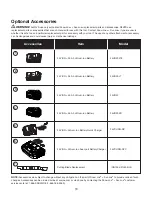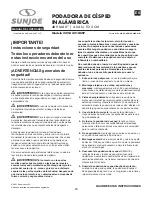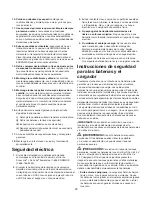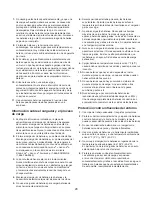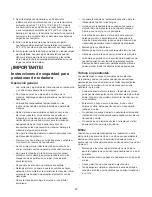
16
5. Fit the new blade on the same position and secure with
the original lug nut (Fig. 21).
Storage
Follow the steps below to prepare the lawn mower for storage:
1. Remove the batteries and the safety key from the
battery compartment.
2. Remove the grass collection bag. Engage the height
adjustment lever in the lowest cutting height slot.
3. Clean the mower with a damp cloth or hand brush.
4. Inspect the mower carefully for worn, loose or damaged
parts. Check connections and screws and tighten if
necessary. Pay special attention to the mower blade and
replace/sharpen if it shows signs of wear. Refer to the
Maintenance and Care section.
5. Store the mower indoors in a dry, clean and cool area
out of the reach of children. Do not store the unit next to
corrosive materials, such as fertilizer and rock salt.
6. Do not cover the lawn mower with a solid plastic sheet.
Plastic coverings trap moisture around the mower,
which can damage the unit.
7. Press down the handle releasing button located on the
middle bar of the handle frame, meanwhile push the upper
handle frame to insert it into the lower handle frame.
8. Press and hold the handle latch. Gently pivot the handle
frame toward the front of the mower until you hear and feel
the handle frame locks in the storage position
(Fig. 22).
Disposal
Rec Disposal
The product comes in a package that protects it against
damage during shipping. Keep the package until you are
sure that all parts have been delivered and the product is
functioning properly. Recycle the package afterwards or keep it
for long-term storage.
WEEE symbol. Waste electrical products should not
be disposed of with household waste. Please recycle
where facilities exist. Check with your local authority
or local store for recycling regulations.
Battery C Disposal
Always dispose of your battery packs according to federal,
state, and local regulations. Contact a recycling agency in your
area for recycling locations.
m
CAUTION!
Even discharged battery packs contain
some energy. Before disposing, use electrical tape to cover the
terminals to prevent the battery pack from shorting,
which could cause a fire or explosion.
m
WARNING!
To reduce the risk of injury or explosion,
never burn or incinerate a battery pack even if it is damaged,
dead or completely discharged. When burned, toxic fumes and
materials are emitted into the surrounding atmosphere.
1. Batteries vary according to device. Consult your manual
for specific information.
2. Install only new batteries of the same type in your product
(where applicable).
3. Failure to insert batteries in the correct polarity, as
indicated in the battery compartment or manual, may
shorten the life of the batteries or cause batteries to leak.
4.
Do not mix old and new batteries.
Fig. 20
Blade
Lug nut
Fig. 21
New blade
Lug nut
Fig. 22
Storage position

